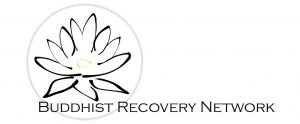by Debra Greenfield, Northwest Buddhist Recovery
Recently, mindfulness based meditation practices have come to light as being a valuable tool in the treatment of not only addiction, but a variety of physical and psychological ailments. Jon Kabbat-Zinn, (Professor of medicine Emeritus and founder of the Mindfulness based stress reduction clinic in Massachusetts) has been instrumental in bringing mindfulness to the medical community and promoting its therapeutic value in treating illness that had traditionally relied solely on medication, thus reducing the need for behavior modifying drugs. Here in Seattle at the U.W., Professor Alan G. Marlatt founded a Mindfulness based relapse prevention program, where meditation is a key player in their program of behavior modification for addiction relapse prevention, as well as stress related diseases.
Many therapists and even AA sponsored meetings are now using meditation as a tool in helping the recovering addict learn the nature of the addicted mind and the benefits of living mindfully in the present moment. But, traditional Buddhist meditators believe that there are two aspects of meditation, in Pali, Sati-Sampajanna. According to Buddhist scripture, Sati – or “mindfulness” must be accompanied by Sampajanna, the Pali word for “clear comprehension”. Clear comprehension in meditation means to see or observe the object of your meditation clearly and entirely using your five mental faculties of confidence, effort, mindfulness, concentration and wisdom. There are four parts to Sampajanna, or clear comprehension:
- Clear comprehension of purpose
- Clear comprehension of what is suitable
- Clear comprehension of being mindful wherever you go
- Clear comprehension of the nature of non-self
Buddhist recovery meetings to various degrees will study and discuss many teachings of the Buddha and how they relate to living a life of sobriety and wholesome intention. Some will discuss Buddhist teachings by Western Dharma teachers such as Kevin Griffin, Noah Levine and Laura S., who have successfully blended their 12 step program with their Buddhist path to create a recovery path that works for many people. Vince Cullen (www.5th-precept.org) follows the ancient teachings taught at the Wat Thamkrabok in Thailand, whose controversial and successful cleansing and recovery program is sought by people worldwide. His booklet “From Hungry Ghost to Being Human…” provides support for those who complete the program and come back to their lives with tools to help prevent addiction relapse. This support program, called The 5th precept, follows a very traditional Buddhist path in providing guidelines for the recovering addict to live a new life without drugs or alcohol. There are meetings called “sit and share” where they use this booklet as a tool of study. One of the practices on this path is Sajja, or “establishing oneself in the power of truth (i.e. the Teachings of the Buddha) to gain one’s end”. In traditional Buddhism, when someone declares “etena sajja -vajjena” or “with these words of Truth” accompanied by a vow or promise, it was thought to give that promise greater power. At the heart of this practice is the “Sajja vow” taken with a monk (or with your recovery group or even alone) stating your intent to adhere to the 5th precept of sobriety, and live a more wholesome and intentional life . This path of recovery encourages the practice of generosity, forgiveness, kindness and ethical behavior as well as meditation with clear comprehension and keeping company with other friends on the path. Whatever Buddhist recovery meeting we attend or facilitate, we should remember to practice our mindfulness meditation with “clear comprehension” , while on the cushion or out in the world.
Nov. 2013


